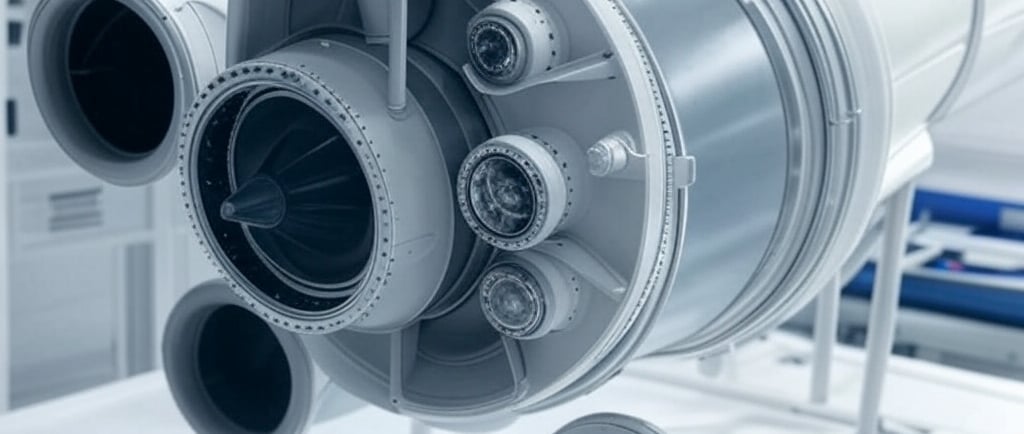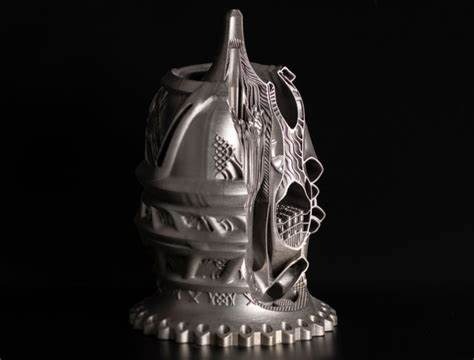The Future of Rocket Propulsion: AI Innovations and Energy Conversion Improvements
AI is creating innovative designs as well as new high energy models for fuel
AI
3/11/20258 min read


Introduction to Rocket Propulsion and AI
Rocket propulsion is a fundamental technology that enables humanity to explore the cosmos, delivering payloads beyond the confines of Earth’s atmosphere. Traditional rocket propulsion systems rely on the basic principles of jet propulsion, where propellant is combusted in a combustion chamber to produce high-velocity exhaust, generating thrust. These systems, whether solid, liquid, or hybrid, have allowed significant achievements in space exploration, including human and robotic missions to the Moon, Mars, and beyond. Each of these systems has its unique advantages and limitations, affecting efficiency, thrust-to-weight ratio, and operational complexity.
The significance of rocket propulsion in space exploration extends beyond merely reaching orbit; it encompasses orbital dynamics, spacecraft design, and mission planning. Engineers and scientists continually seek innovations within this realm to enhance performance and reduce costs. As the demand for space travel escalates—whether for scientific research, commercial purposes, or interplanetary exploration—advancements in propulsion technology become increasingly critical.
In this context, artificial intelligence (AI) emerges as a transformative force in rocket propulsion. By leveraging AI algorithms, engineers can optimize combustion processes, predict system failures, and design more efficient engines. Machine learning techniques facilitate the analysis of vast datasets generated during rocket launches, driving improvements in real-time diagnostics and predictive maintenance. Moreover, AI contributes to the simulation and modeling processes, enabling researchers to explore novel propulsion concepts that blend traditional methods and innovative technologies seamlessly.
As we delve deeper into discussions surrounding AI-designed propulsion technologies and their role in energy conversion improvements, understanding the foundational concepts of traditional rocket propulsion will underscore the potential for revolutionizing human access to space. The integration of AI in this field may usher in a new era of efficiency, safety, and reliability that could redefine the future of aerospace engineering.
Current State of Rocket Propulsion Technologies
The progression of rocket propulsion technologies has significantly shaped the landscape of aerospace engineering. Predominantly, rocket propulsion systems can be categorized into chemical and electric propulsion, each possessing its distinct advantages and limitations. Chemical propulsion, which is the most widely used technology today, relies on the combustion of propellants to produce thrust. Despite its effectiveness in generating high levels of thrust, this system is plagued by inefficiencies that can lead to excessive fuel consumption and increased operational costs. Moreover, the performance of chemical rockets is heavily influenced by the specific impulse, which limits their ability to achieve higher velocities over extended durations.
On the other hand, electric propulsion systems, such as ion thrusters and Hall effect thrusters, offer a more efficient alternative for deep-space missions. These systems utilize electrical energy to accelerate ions and produce thrust, yielding a high specific impulse. However, they are not without challenges; electric propulsion systems require substantial electrical power, which may not always be readily available during missions. The limited thrust produced by these systems also necessitates longer burn times, making them unsuitable for all mission profiles.
These inherent limitations highlight the necessity for innovation within the field of rocket propulsion. The complexities associated with achieving optimal performance at reduced costs indicate that traditional approaches may no longer suffice. As the aerospace sector continues to evolve, the integration of artificial intelligence (AI) is increasingly recognized as a pivotal factor in the advancement of propulsion technologies. Employing AI can lead to enhanced design processes, improved efficiency, and more effective energy conversion mechanisms. Thus, exploring AI innovations could pave the way for breakthroughs that address the inefficiencies faced by current propulsion systems, ultimately reshaping the future of aerospace engineering.
AI in Propulsion Design: A Game Changer
The integration of artificial intelligence (AI) into the design of rocket propulsion systems marks a revolutionary advancement in aerospace engineering. Traditionally, designing propulsion systems involved extensive modeling and empirical testing, which often led to lengthy development cycles. With AI technologies, however, designers can leverage sophisticated algorithms that enhance the efficiency and effectiveness of the design process. AI’s machine learning capabilities enable it to analyze vast datasets, identifying patterns and correlations that human engineers may overlook. This feature is especially crucial when developing advanced propulsion technologies that require intricate designs and high precision.
One of the significant advantages of AI in propulsion design is its ability to optimize designs through simulation and predictive modeling. By utilizing AI-driven simulations, engineers can create thousands of design variations in a fraction of the time it would take through conventional means. These simulations can predict performance metrics, such as thrust, efficiency, and fuel consumption, under various operational conditions. As a result, engineers can make informed decisions more rapidly, refining designs according to specific mission parameters.
Furthermore, AI accelerates the iteration process. With its capabilities to rapidly assess the performance of different design configurations, AI tools can provide feedback that helps engineers identify design flaws or inefficiencies early in the process. This agility is particularly vital for ambitious space missions, where the performance of propulsion systems can dictate mission success or failure. The ability to quickly adapt designs based on predictive outcomes leads to more robust propulsion systems that are better equipped to handle the demands of deeper space exploration. Overall, AI's role in revolutionizing rocket propulsion design cannot be understated, paving the way for breakthroughs that extend humanity's reach into the cosmos.
Enhancements in Energy Conversion Through AI
Artificial Intelligence (AI) is revolutionizing the field of energy conversion technologies, particularly within rocket propulsion systems. Utilizing machine learning algorithms and data analytics, AI enhances the efficiency of energy conversion processes, allowing for more effective propulsion mechanisms. By optimizing the parameters involved in energy transformation, AI can significantly improve the overall performance and reliability of rocket systems.
One of the key applications of AI in energy conversion is its ability to predict and manage energy flows more accurately. Machine learning models analyze historical data from rocket launches to identify patterns and to foresee potential inefficiencies in energy use. This predictive capability enables engineers to optimize fuel consumption and reduce waste, leading to greener propulsion solutions. The integration of AI ensures that energy conversion systems can adapt dynamically to varying conditions, enhancing their responsiveness and effectiveness.
Moreover, AI facilitates the exploration of novel energy sources beyond traditional hydrocarbon fuels. Through advanced simulations and computational modeling, researchers can evaluate alternative fuels such as hydrogen and biofuels. These renewable sources can potentially reduce the environmental impact of rocket launches. AI-driven analysis plays a crucial role in assessing these alternatives, ensuring that new fuels are not only viable but also efficient in their conversion to propulsive energy.
The incorporation of sustainable energy solutions into rocket propulsion systems, powered by AI, leads to substantial benefits. For instance, utilizing solar energy or advanced battery systems could supplement traditional fuel, providing a multi-source energy framework. By harnessing AI to manage these diverse energy inputs, rocket systems could achieve lower operating costs and extended mission capabilities while minimizing their carbon footprint.
In conclusion, AI-driven enhancements in energy conversion processes are transforming how rocket propulsion systems operate, making them more efficient, adaptive, and sustainable. The focus on integrating innovative energy solutions positions the aerospace industry to address the challenges of future space exploration. As AI technologies continue to evolve, their influence will only grow, ushering in a new era of propulsion efficiency and environmental responsibility.
Synergy Between AI and Propulsion Systems: Case Studies
The integration of artificial intelligence (AI) into rocket propulsion systems is not just theoretical; it has been realized in various groundbreaking projects. One of the most striking examples is the work conducted by NASA on the Space Launch System (SLS). This program leverages AI algorithms to optimize engine performance and enhance the design process. By simulating thousands of engine configurations in a fraction of the time it would take through traditional means, AI helps engineers rapidly iterate designs that maximize efficiency and thrust. The outcome has been an accelerated timeline for developing more powerful propulsion systems that are vital for deep space exploration.
Another illustrative case is the collaboration between SpaceX and AI technology in the Falcon 9 rocket's reusability. AI systems analyze vast amounts of telemetry data during launches and landings to predict potential failures and improve recovery strategies. This revolutionary approach has significantly increased the frequency of launches and reduced costs by enabling the rocket’s first stage to land safely back on Earth. The AI-driven data analytics platform allows SpaceX engineers to fine-tune their propulsion systems continually, leading to enhanced reliability and performance.
Additionally, the European Space Agency (ESA) has commenced projects where AI aids in optimizing energy conversion in propulsion systems. By utilizing machine learning algorithms, ESA has developed a robust model to predict combustion dynamics in hybrid rocket motors, improving their efficiency. The project's results demonstrate how AI can identify optimal fuel configurations, which results in reduced exhaust emissions and enhanced thrust-to-weight ratios. Such advancements exemplify the transformative power of AI in reshaping propulsion technologies.
These case studies not only highlight the practical applications of AI in rocket propulsion but also underline the necessity of adopting AI-driven methodologies for future innovations in space exploration. As AI continues to evolve, its synergy with propulsion systems may unlock unprecedented capabilities in space travel.
Challenges and Ethical Considerations
The integration of artificial intelligence (AI) into rocket propulsion systems presents a myriad of challenges that must be addressed to ensure effective implementation. One significant challenge is the technological limitations inherent within current AI systems. While advancements in machine learning and data analysis hold great potential for optimizing propulsion efficiency, existing AI technologies might still lack the robustness required to handle the complex variables inherent in aerospace conditions. The need for high reliability and real-time decision-making under extreme conditions poses a significant hurdle.
Funding is another crucial challenge. Developing AI-powered propulsion technologies requires substantial investment in research and development. Stakeholders, including government agencies and private firms, must be willing to allocate resources toward innovative projects, which can be difficult given competing priorities within the aerospace sector. This financial barrier can impede progress and delay the positive impact AI can have on energy conversion improvements in rocket propulsion.
Moreover, the establishment of regulatory frameworks is vital for the safe and effective integration of AI technologies in this highly specialized field. Current regulations may not adequately address the unique aspects of AI systems in aerospace applications, leading to ambiguities that could hinder advancement. Policymakers will need to collaborate with industry experts to create comprehensive guidelines that ensure safety without stifling innovation.
Furthermore, ethical considerations play a prominent role in this integration. Heavy reliance on AI in critical systems raises concerns about human safety and accountability. Questions about decision-making processes and the potential for malfunctions must be addressed to build public trust in AI-driven technologies. Stakeholders must cultivate an ethical framework that not only prioritizes safety and reliability but also considers the moral implications of increasing automation in aerospace operations.
The Road Ahead: Future Trends and Predictions
As we look into the future of rocket propulsion and energy conversion, the integration of artificial intelligence (AI) promises to revolutionize these fields over the next decade. One significant trend will be the advancement of AI-driven design methodologies, which could expedite the engineering processes of rocket systems. These AI algorithms will leverage vast datasets from past missions, optimizing designs for efficiency and performance, resulting in breakthrough propulsion systems with greater thrust-to-weight ratios and longer lifespans.
Moreover, the synergy between AI and renewable energy sources will likely lead to more efficient energy conversion technologies. Innovations such as advanced fuel cells and solar propulsion techniques are expected to emerge, decreasing the reliance on traditional fuel sources. These developments could render space missions more sustainable, as they leverage in-situ resources found on celestial bodies, significantly reducing the logistical challenges associated with long-duration space travel.
In addition to design improvements, AI is set to enhance operational efficiencies in rocket launches and satellite deployments. Predictive analytics and real-time monitoring enabled by AI could minimize failures, optimize mission parameters, and streamline launch sequences. As the costs associated with space exploration decrease due to these efficiencies, we can anticipate a surge in both governmental and private sector interest in space ventures.
Perhaps most excitingly, the potential for interplanetary travel could finally become a tangible reality as AI refines the necessary propulsion systems for deep-space exploration. Innovations in thermal propulsion and plasma-based technologies may pave the way for human exploration of Mars and beyond. Therefore, the coming years are poised to witness remarkable advancements that, while ambitious, are grounded in the scientific efforts of today.
Thus, continued investment in these areas is crucial to harness the full potential of rocket propulsion and energy conversion technologies, allowing future generations to explore previously unimaginable frontiers in space exploration.





Your Opinion? Let us know!
We’re here to help you enhance your life with AI.